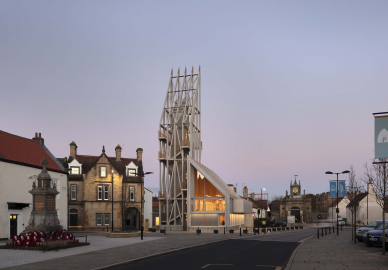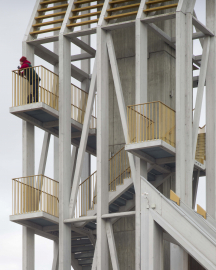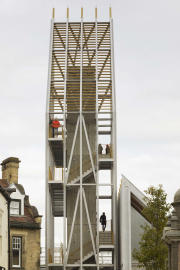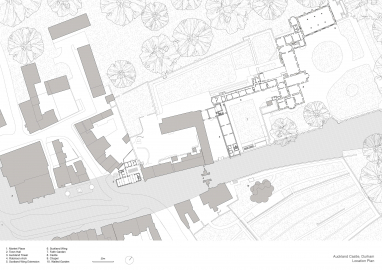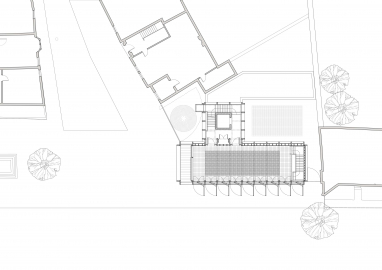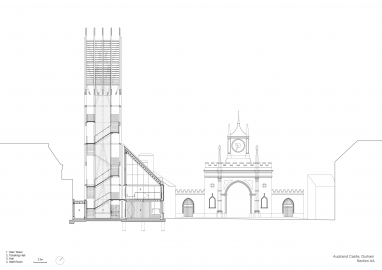Auckland Tower
Auckland Tower in Bishop Auckland acts as an access point and gateway to The Auckland Project, a new visitor destination in the North East of England. The building provides ticketing, information and orientation for the refurbished Castle and new Faith Gallery. The tower offers views over the town and landscape beyond.
The historic home of the Prince Bishops of Durham, Auckland Castle is one of the most important and best-preserved bishops' palaces in Europe. In 2012 it was taken over by regional charity, The Auckland Project, and has been transformed into a faith, art and heritage destination of international significance. Auckland Tower is a new ticketing and information hub with a viewing tower.
The site provides a spatial connection between the castle complex and the town’s Market Place. The timber building is conceived as a long hall, reminiscent of a
market hall. The hall is raised above ground level, open to views of the Market Place and Castle setting. It is used for exhibitions and events. The building’s other function is as the first port of call for visitors to the Castle and its various museums and galleries. It houses a shop, ticket office and toilet facilities.
In its pivotal location on a vacant corner site between the town and castle, the building was to link town and castle, engaging the new and the old. A key challenge was to get a modern building within a Grade I listed context through Planning. During the design phase, a close and dynamic dialogue was established with the heritage consultant, local planning department and Historic England. The heritage significance of the site and the public benefits of the proposals have been at the heart of the decision making process.
The form and construction of the tower is intended to echo lightweight provisional structures that would once have clustered around castle walls. It allows people to look into the castle and understand the previously secluded world.
The walls of the building are engraved in text telling the story of the castle through history. First floor timber shutters pivot open when the castle opens, giving the structure an open, kinetic quality. The ceiling of the hall carries stencilled representations. Our intention is that the building is not simply a container for interpretation but participates in the representation of the site through its own features.
The mono pitched building is a timber frame structure, made from European Larch glulam. The softwood is protected in a grey surface treatment to help the weathering process. This treatment will eventually weather off to reveal the silver-grey, naturally weathered wood beneath. The timber frame sits on a board marked concrete plinth to raise it off the ground.
The grey exterior of the building appears in contrast to the luminous golden colour of the interior. Internal walls are timber panelled and the first-floor hall is largely glazed with opening shutters to the south facing french windows. The hall can be completely transparent and open or fully closed and resemble an ornate casket.
The mono pitched structure of the tower is left unclad, with a metal staircase spiralling around the board marked concrete lift shaft. The treads and viewing platforms are perforated to give the overall tower a sense of transparency.
Building elements are mostly prefabricated locally, helping the local economy and shortening the duration of onsite construction. The mechanical and electrical systems are passive with

